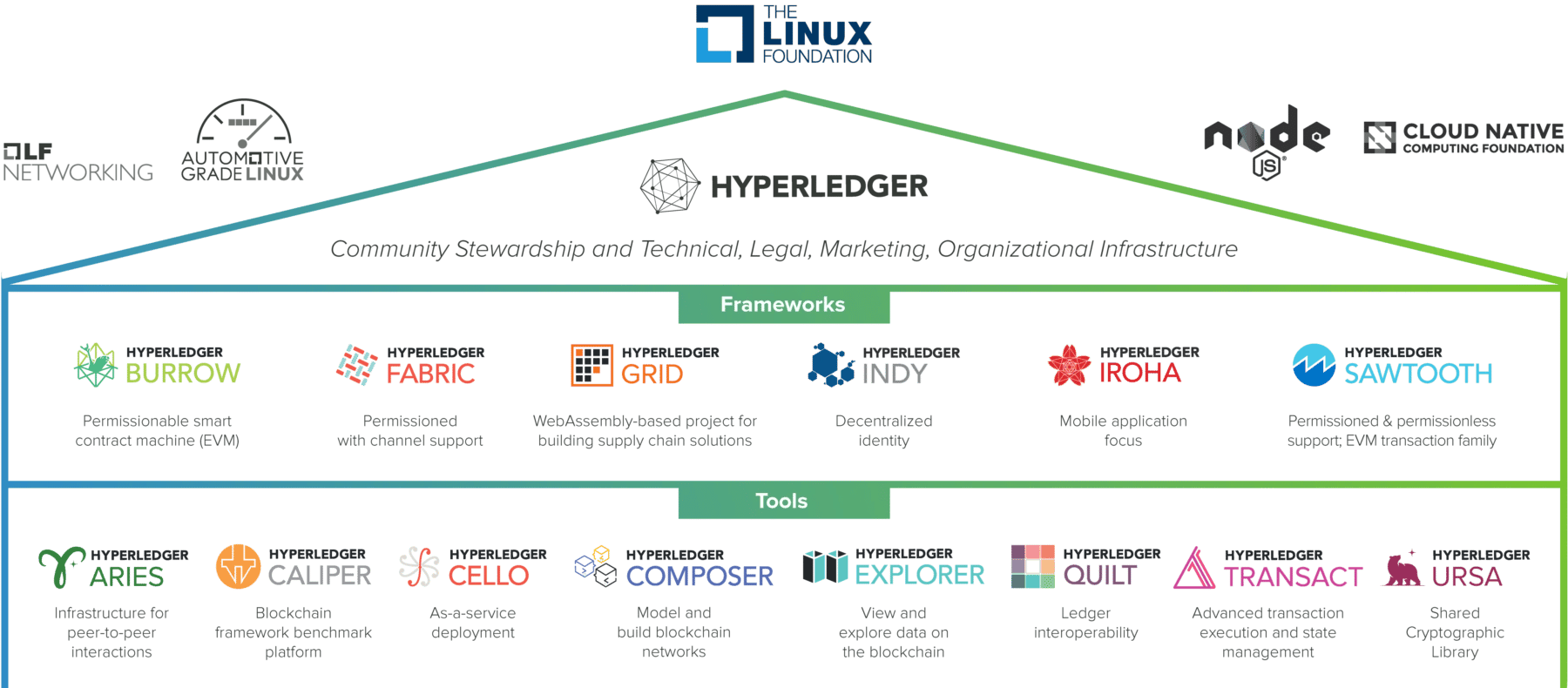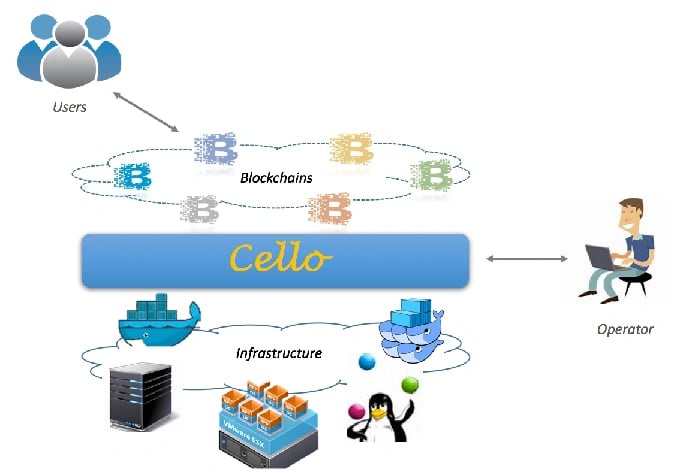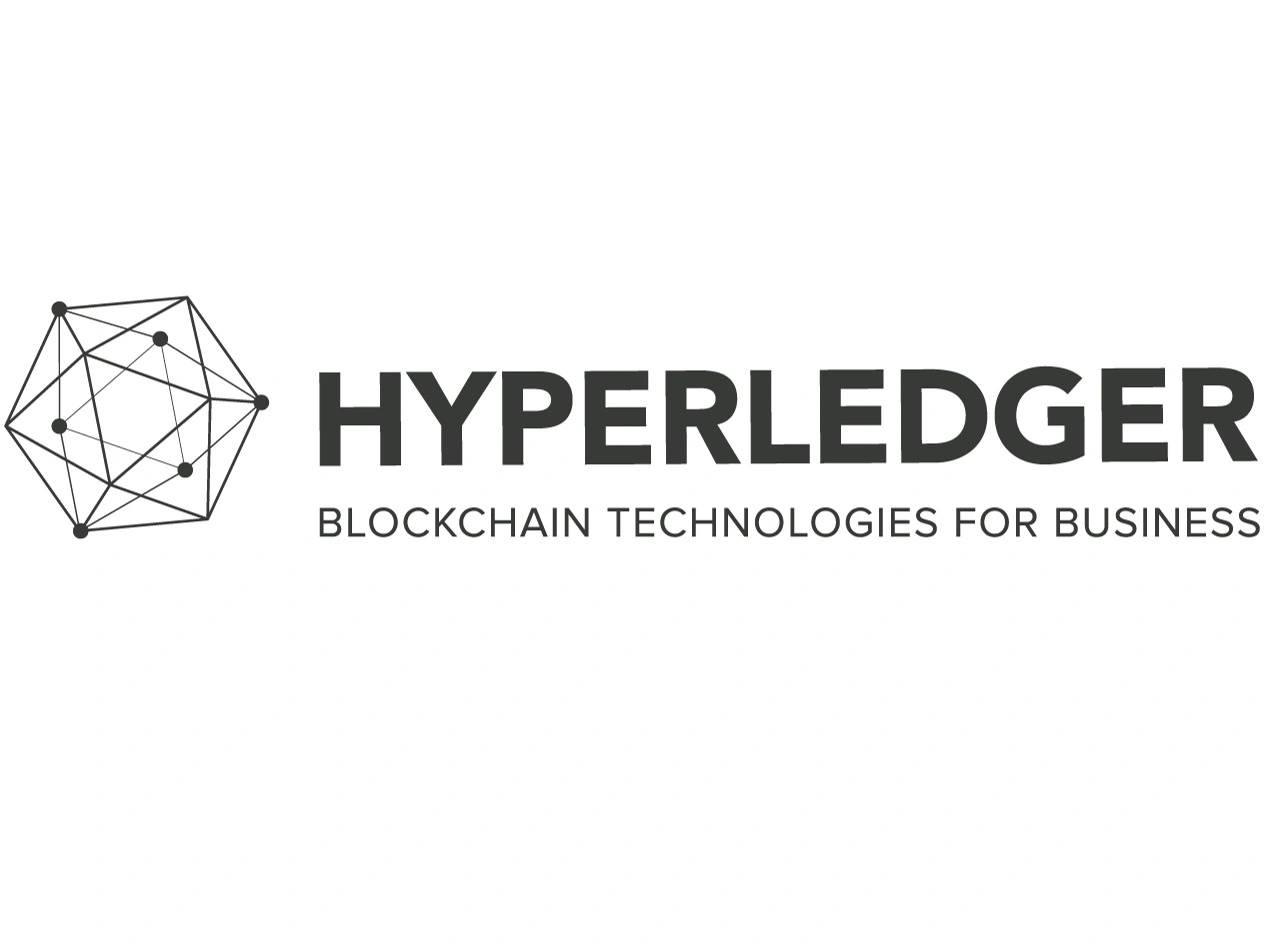订阅 wiki
Share wiki
Bookmark
Hyperledger
Hyperledger
Hyperledger 是一个开源项目的集合,旨在支持基于区块链的分布式账本的开发。它旨在创建构建区块链和相关应用程序所需的框架、标准、工具和库。[1]
概述

通过为企业级区块链部署提供丰富的不同稳定框架、工具和库,Hyperledger旨在推动区块链技术的大规模企业应用。
虽然像比特币和以太坊这样的加密货币依赖于无需许可的区块链,但Hyperledger基金会专注于创建许可的企业区块链。这意味着区块链在私有网络中运行,参与者具有遵守共识规则的内在好处。
随着Hyperledger的推出,Linux基金会为该项目设定了五个主要目标。该项目最大的任务之一是为企业创建一个直观的、基于区块链的生态系统,以便在内部和相互之间进行通信。Hyperledger基金会的另一个重要目标是推广教育材料和活动,以展示区块链技术的众多市场机会。由于区块链的内在特性,Hyperledger基金会还旨在为企业创建一个中立、开放和社区驱动的基础设施。最后但并非最不重要的是,该基金会正在努力促进和建立强大的社区精神,以帮助进一步发展企业领域的区块链技术。
Hyperledger基金会已成功地为其工作和合作伙伴关系中的区块链技术开发了许多现实生活中的用例和应用程序。从金融服务到供应链管理再到医疗保健,该基金会的主要目标之一是将区块链技术引入尽可能多的行业。 凭借IBM、沃尔玛、霍尼韦尔、富士通和英特尔等企业合作伙伴,Hyperledger基金会是全球公认的区块链生态系统之一。随着对区块链技术的兴趣呈指数级增长,该基金会正在将其触角扩展到新的行业和各种新的用例。[2]
历史
Linux基金会在2015年宣布创建Hyperledger项目,比其发布早一年。Brian Behlendorf被任命为执行董事。Behlendorf表示,Hyperledger项目永远不会构建自己的加密货币。
2016年,该项目还开始接受代码库和其他核心元素技术的孵化提案。最初接受的两个区块链框架代码库是Hyperledger Fabric和libconsensus。后来,英特尔的分布式账本Sawtooth被孵化。
2018年,添加了生产就绪的Sawtooth 1.0。
2019年,宣布了Hyperledger Fabric的长期支持版本。
2021年10月,Behlendorf将执行董事职位 передал 给 Daniela Barbosa。同月,Hyperledger更名为Hyperledger基金会,以便在“Hyperledger作为一个组织和各个Hyperledger项目之间划清界限”,根据该组织宣布变更的博客文章。
主要框架
Hyperledger最著名的两个框架包括Hyperledger Fabric和Sawtooth。
Hyperledger Fabric
这是 Hyperledger 中最受欢迎的项目之一。它是一个开源的企业级许可型分布式账本技术 (DLT) 平台,专为企业环境设计,与其他流行的分布式账本或区块链平台相比,它提供了一些关键的差异化功能。Hyperledger Fabric 是与 IBM 和 Digital Asset 合作开发的。它提供了一个模块化架构,定义了节点之间的角色、智能合约的执行以及可配置的共识服务。Fabric 的特点包括使用智能合约以及可插拔的 Hyperledger Fabric 共识协议。Fabric 还通过安装模块支持不同的编程语言。Hyperledger Fabric 用于需要分布式账本的集成项目。
Fabric 具有高度模块化和可配置的架构,从而能够为广泛的行业用例(包括银行业、金融、保险、医疗保健、人力资源、供应链甚至数字音乐交付)进行创新、通用性和优化。
Fabric 是第一个支持使用通用编程语言(如 Java、Go 和 Node.js)编写的智能合约的分布式账本平台,而不是受约束的特定领域语言 (DSL)。这意味着大多数企业已经具备开发智能合约所需的技能,无需额外的培训来学习新的语言或 DSL。
Fabric 平台也是许可型的,这意味着,与公共的无需许可的网络不同,参与者彼此了解,而不是匿名的,因此完全不受信任。这意味着,虽然参与者可能不完全信任彼此(例如,他们可能是同一行业的竞争对手),但网络可以在治理模型下运行,该模型建立在参与者之间确实存在的信任之上,例如处理争议的法律协议或框架。
Fabric 可以利用不需要原生加密货币来激励昂贵的挖矿或为智能合约执行提供燃料的共识协议。避免使用加密货币可以减少一些重大的风险/攻击向量,并且没有加密挖矿操作意味着该平台的部署成本与任何其他分布式系统大致相同。
这些差异化设计功能的结合使 Fabric 在交易处理和交易确认延迟方面成为当今性能更好的平台之一,并且实现了交易和智能合约(Fabric 称之为“链码”)的隐私和保密性。
Fabric 的差异化能力使其成为一个高度可扩展的许可型区块链系统[4],支持灵活的信任假设,使该平台能够支持从政府、金融到供应链物流、医疗保健等广泛的行业用例。
Hyperledger Fabric 是 Hyperledger 项目中最活跃的项目。围绕该平台构建的社区正在稳步增长,并且每个后续版本提供的创新都远远超过任何其他企业区块链平台。[3]
Hyperledger Sawtooth
Hyperledger Sawtooth 是一个企业区块链平台,用于构建分布式账本应用程序和网络。其设计理念旨在保持账本的分布式特性,并确保智能合约的安全,尤其是在企业应用中。它是由英特尔贡献的许可型模块化区块链平台。
Sawtooth 通过将核心系统与应用领域分离,简化了区块链应用开发。应用开发者可以使用他们选择的语言指定适合其应用的业务规则,而无需了解核心系统的底层设计。
Sawtooth 旨在解决许可型(私有)网络的挑战。可以轻松部署具有独立权限的 Sawtooth 节点集群。没有可能泄露交易模式或其他机密信息的中心化服务。区块链存储指定权限的设置,例如角色和身份,以便网络中的所有参与者都可以访问此信息。[7]
Hyperledger Sawtooth 为实现基于交易的更新提供了一个极其模块化和灵活的平台,这些更新在由共识算法协调的不受信任的各方之间共享状态,它可以帮助那些难以使用 blockchain 技术。的企业。
Sawtooth 的功能包括动态共识、交易族、消逝时间证明(一种共识算法)、并行交易执行(允许创建单独的链)和私有交易。它还支持 Ethereum smart contracts。还提供 Python、Go、JavaScript、Rust、Java 和 C++ 的软件开发工具包 (SDK)。Sawtooth 适用于需要许可型和模块化区块链平台的企业。[6]
其他 Hyperledger 工具和项目
Hyperledger Fabric 和 Sawtooth 并非 Hyperledger 仅有的两个项目。Hyperledger 提供多个当前活跃或正在孵化中的项目和工具,这意味着它们需要满足一定的退出标准才能被宣布为活跃且可用于生产。其中一些项目包括:
- Hyperledger Iroha。一个 区块链 框架,用于与现有网络集成。Hyperledger Iroha 的设计宗旨是简单易用,可以集成到需要分布式账本技术的基础设施或物联网项目中。Hyperledger Iroha 具有结构简单、模块化、领域驱动的 C++ 设计、侧重于客户端应用程序开发以及一种名为 YAC 的新型崩溃容错共识算法。Iroha 具有模块化设计、基于控制的访问、对许多库的访问以及资产和身份管理。它被用于金融服务、医疗保健和教育等领域。[9]
-
Hyperledger Indy。一个为去中心化身份设计的框架。它提供组件、工具集、库和可重用组件,用于提供植根于 区块链 或其他分布式账本的数字身份,以便它们可以在管理域、应用程序和任何其他孤岛中互操作。它还包括自决权,可以安全地存储所有基于身份的文档。
主要特点: - 专为去中心化身份设计的分布式账本 - 本质上具有抗关联性 - DID(去中心化标识符),在全球范围内唯一且可解析(通过账本),无需任何中心化解析机构 - 成对标识符在任何两个实体之间创建安全的 1:1 关系 - 可验证声明是用于交换数字身份属性和关系的可互操作格式,目前正在 W3C 进行标准化 - 零知识证明,证明一组声明中的部分或全部数据为真,而不泄露任何额外信息,包括证明者的身份。[8]
- Hyperledger Besu。一个开源的以太坊代码库,可以在私有许可平台或 以太坊 公共网络上运行。Hyperledger Besu 是一个以太坊客户端,旨在为公共和私有许可网络用例提供企业友好性,具有可提取的以太坊虚拟机 (EVM) 实现。它也可以在 Sepolia 和 Görli 等测试网络上运行。Hyperledger Besu 包括几种共识算法,包括 权益证明、工作量证明 和权威证明(IBFT 2.0、QBFT 和 Clique)。其全面的权限方案专为联盟环境中使用而设计。它还具有面向用户的 API 和监控。[10]
- Hyperledger Explorer。一个仪表板实用工具,允许用户监控、搜索和维护 区块链 和相关数据。通过它,组织可以检查节点、区块、交易和 智能合约。它还允许用户进行代码更改。Hyperledger Explorer 是一个用户友好的 Web 应用程序工具,用于查看、调用、部署或查询区块、交易和相关数据、网络信息(名称、状态、节点列表)、链代码和交易族,以及存储在账本中的任何其他相关信息。[11] 有 2 个选项可以启动 Explorer - 使用 Docker 快速启动和使用代码库快速启动 - 以及每个选项所需的软件依赖项。[12]
- Hyperledger Cello。一个区块链即服务工具包,用于创建、终止和管理 区块链 服务。Hyperledger Cello 旨在充当 区块链 的运营仪表板,从而减少创建、管理和使用区块链所需的工作量。此外,它还可以用于促进创建区块链即服务。Cello 提供了一个运营控制台,用于高效地管理区块链并在各种基础设施(例如,裸机、虚拟机和各种容器平台)之上运行。[13]
使用 Cello,每个人都可以轻松地: - 从头开始快速构建 区块链 即服务 (BaaS) 平台。 - 立即配置可定制的区块链,例如,Hyperledger Fabric 网络 v1.0。 - 在裸机、虚拟云(例如,虚拟机、vsphere 云)、容器集群(例如,Docker、Swarm、Kubernetes)之上维护运行中的区块链网络池。 - 通过仪表板检查系统状态、调整链号、扩展资源。[14]

- Hyperledger Burrow。一个权限以太坊智能合约区块链节点。这处理 EVM 上的交易和智能合约代码执行。Hyperledger Burrow 已于 2022 年 5 月 12 日被 TSC(技术监督委员会)移至 EOL(生命周期结束)状态。[15]
- Hyperledger Bevel。Hyperledger Bevel 是一个加速器,可帮助开发人员快速设置和部署安全、可扩展且可用于生产的 DLT 网络,并且还允许新组织轻松地加入网络。Bevel 加速了 DLT 网络的部署,让开发人员可以专注于构建 区块链 应用程序,而无需浪费宝贵的时间来建立环境或担心网络是否会扩展并满足生产要求。Bevel 促进了一种安全可靠的部署和运营不同 DLT 平台的方式。[16]
- Hyperledger Firefly。一个用于 Web3 应用程序的中间件开源软件堆栈。Hyperledger FireFly 是第一个开源超级节点:一个完整的堆栈,供企业构建和扩展安全的 Web3 应用程序。用于数字资产、数据流和 区块链 交易的 FireFly API 使在流行的链和协议上构建可用于生产的应用程序的速度大大加快。[17]
理解 FireFly 超级节点的最简单方法是将其视为一个工具箱。将现有应用程序和/或后台办公系统连接到工具箱,在其中,有两组不同的工具。一组工具可帮助您连接到已经存在的 Web3 世界,另一组工具可让您快速构建具有安全性和可扩展性的新去中心化应用程序。\[[18\]](#cite-id-gf80z0c4rpo)
-
Hyperledger Cacti。Hyperledger Cacti 由两个系统(架构和代码库)合并而成,是一个多方面的互操作性平台,连接并在多个异构账本上运行交易,它利用了 Hyperledger Cactus 和 Weaver(一个 Hyperledger Lab)的尖端技术特性。[19]
-
Hyperledger Solang。一个 Solidity 编译器,可以实现 智能合约 的可移植性。Solang 的想法源于 Hyperledger Burrow 的早期工作。由于现有的 Solidity 编译器专门用于 以太坊,因此对支持 Hyperledger Burrow 的功能不感兴趣。从这个问题出发,诞生了一个可移植的 Solidity 编译器,可以支持许多 区块链,从而可以根据所针对的区块链具有不同的功能。
Solidity编程语言是智能合约最流行的语言,并且许多区块链都明确表示希望支持它。虽然一些区块链模拟EVM环境以保持与Solc构建的Solidity的兼容性,但它们无法访问以模拟EVM环境无法提供的以太坊的缺失功能,例如密码学功能(如blake2)、零知识证明以及调用或被原生合约调用的能力。Hyperledger Solang提供了将Solidity编译为EVM之外的本机执行环境的能力,从而为该语言带来了许多新的可能性和创新。目前,Hyperledger Solang支持Solana和Polkadot (Substrate)[20]
-
Hyperledger Aries。 Hyperledger Aries提供了一个共享、可重用、可互操作的工具包,专为专注于创建、传输和存储可验证数字凭证和去中心化密钥管理的计划和解决方案而设计。它是基于区块链的对等交互的基础设施。该项目利用Hyperledger Ursa提供的密码学支持,以提供安全密钥管理和去中心化密钥管理功能。[21]
-
Hyperledger Anoncreds。 Hyperledger AnonCreds – “匿名凭证”的缩写
- 是世界上最常用的与账本无关的可验证凭证(VC)格式,自2017年以来一直在使用,最初是Hyperledger Indy开源项目的一部分,现在是Hyperledger AnonCreds项目的一部分。AnonCreds与账本无关,并具有正式的开放规范,是一种VC格式,为核心VC保证添加了重要的隐私保护ZKP(零知识证明)功能。[22][23]
- Hyperledger Caliper。一个区块链基准测试工具。Caliper用于评估区块链实现的性能。但是,它没有预定义的标准,因为区块链实现可能都需要不同的标准集。它允许用户使用一组预定义的使用案例来衡量区块链实现的性能。Hyperledger Caliper将生成包含许多性能指标的报告,作为使用以下区块链解决方案时的参考:Hyperledger Besu、Hyperledger Burrow、以太坊、Hyperledger Fabric、FISCO BCOS、Hyperledger Iroha和Hyperledger Sawtooth。[24]
截至2022年,Hyperledger通过TSC(技术监督委员会)将四个项目转移到生命周期结束(EOL)状态:Avalon、Burrow、Explorer和Quilt。
发现错误了吗?
